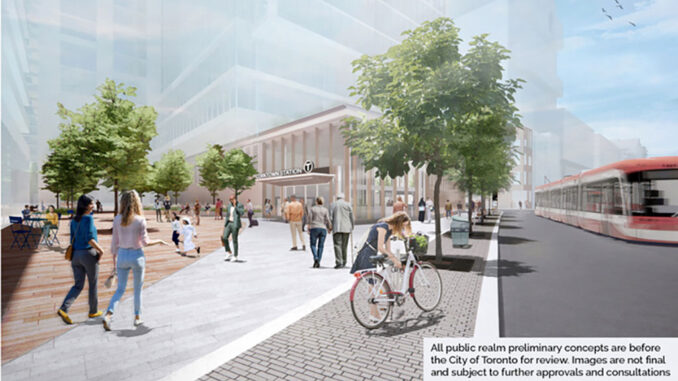
Proposals to create vibrant communities with increased access to public transit, more jobs and housing
TORONTO – The Ontario government is proposing to build vibrant communities along the future Ontario Line subway at the Exhibition, King-Bathurst and Queen-Spadina transit stations. These mixed-use, live-work-play communities would bring more jobs and housing closer to transit, helping to increase ridership, reduce congestion, stimulate economic growth and reduce the cost of building infrastructure for taxpayers. The development proposals for these transit-oriented communities were recently shared with the City of Toronto for review.
“Our government is taking a bold, new approach to city building by funding, planning and delivering historic transit projects while also rolling out our innovative transit-oriented communities program,” said Kinga Surma, Associate Minister of Transportation (GTA). “Our plan is about more than just expanding public transit. It is about changing our way of life for the better. People want to live near transit, so it only makes sense to integrate housing options, retail and community amenities as part of the smart transit planning process.”
The proposal would transform Exhibition Station into a connected transit hub with new housing, office and retail space that would support approximately 2,300 jobs. Transit riders will be able to connect to GO Transit, TTC services and the future Ontario Line subway, making it more convenient to get to this popular destination for sporting events, concerts and other attractions, as well as the growing Liberty Village community.
The province is also proposing a transit-oriented community at the future Queen-Spadina station that would provide more housing, retail space for businesses and convenient access to transit, including the TTC streetcar and future Ontario Line service. At the future King-Bathurst station, the proposal looks to add more housing and office space while retaining heritage buildings and structures, recognizing the character of this vibrant neighbourhood.
Once the city review is complete, the province will host engagement with the public, stakeholders and Indigenous partners beginning this coming Winter.
“We recognize that each neighbourhood has its unique character and needs, which is why it’s so important to engage with the public, key stakeholders and Indigenous partners on these proposals to hear their ideas while addressing potential concerns,” said Associate Minister Surma. “Our approach to building transit-oriented communities will not be complete without input from local communities as they will help shape our shared vision.”
Quick Facts
- In April 2021, as part of the Transit-Oriented Communities Program, Ontario shared preliminary plans with the City of Toronto to build two proposed transit-oriented communities located at the future East Harbour Transit Hub and Corktown Station along the new Ontario Line subway.
- On July 21, 2020, Ontario passed the Transit-Oriented Communities Act, to enable the construction of vibrant communities centred around transit stations along the routes of the province’s four priority subway projects.
- In February 2020, Ontario signed the Ontario-Toronto Transit Partnership Preliminary Agreement with the City of Toronto to deliver on the unified plan to significantly expand and modernize the subway network across the Greater Toronto Area.
- Ontario, in partnership with the federal and municipal governments, is undertaking the largest subway expansion in Canadian history. This includes the all-new Ontario Line; a three-stop Scarborough Subway Extension; the Yonge North Subway Extension; and the Eglinton Crosstown West Extension.
SOURCE Province of Ontario

Leave a Reply